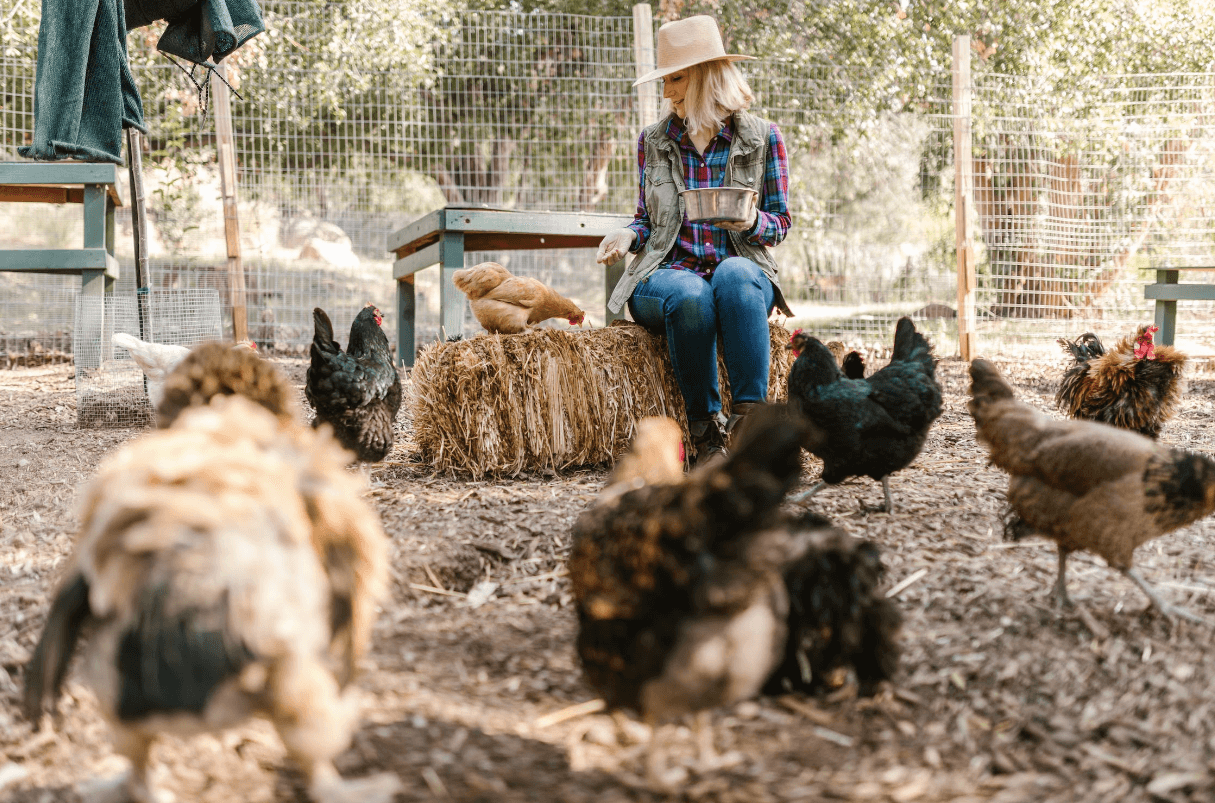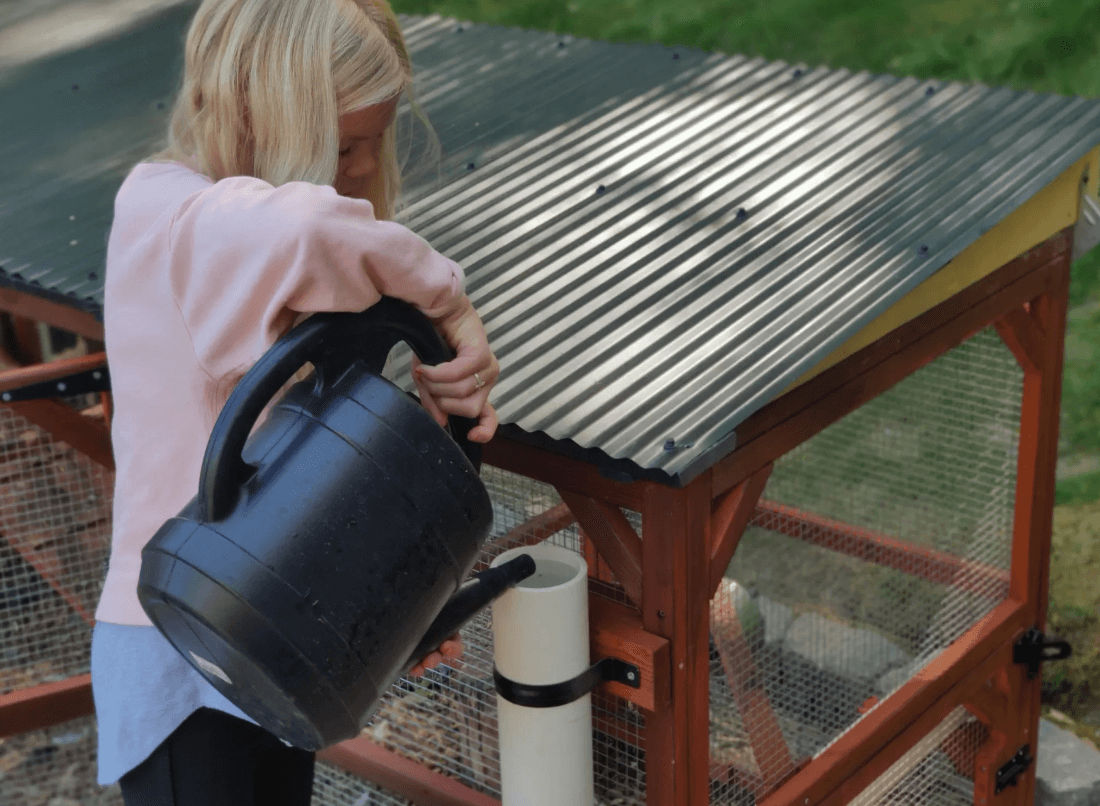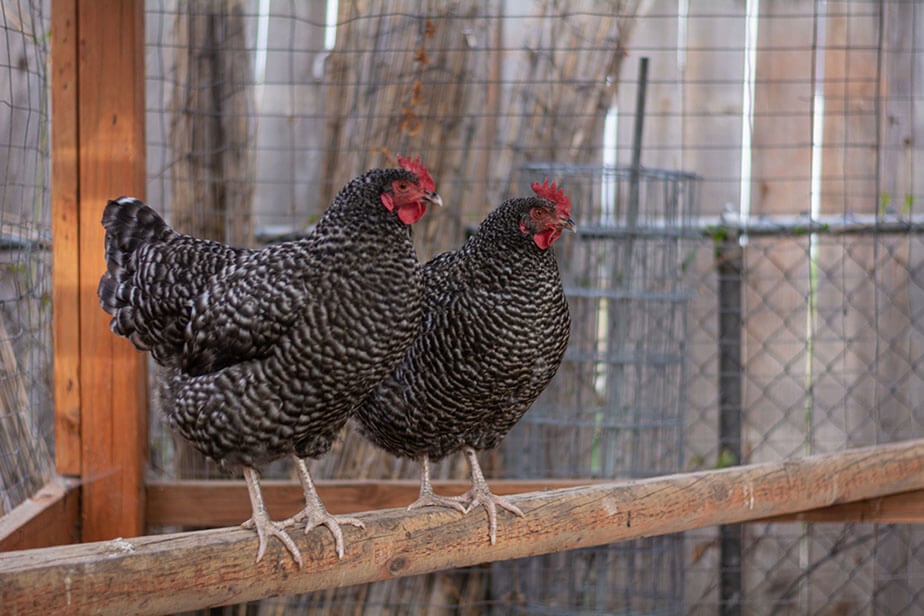One of the most important tools required for hatching and raising chicks is a chicken brooder. This piece of equipment is a safe, warm space for your babies to stay until they’re big enough for a coop.
It’s crucial to have a brooder ready for your chicks as soon as they hatch, as they’re not yet able to regulate their body temperatures or find their own food and water. It provides everything that a hen would for her offspring.
While setting up a brooder might seem intimidating at first, it’s actually pretty easy with a bit of know-how. Let’s dive into our essential guide to keeping your chicks healthy and creating a comfortable, nurturing environment for them to thrive.
What Is a Chicken Brooder?
A chicken brooder is a controlled environment that provides the optimal conditions for the early growth and development of young chicks, acting as a substitute for a hen’s care.
It should include a heat source to maintain the right temperature, proper bedding to ensure cleanliness, access to food and water, and enough space for the chicks to move around and interact with each other.
Brooders are used during the first few weeks of a chick’s life until they’re old enough to be moved into a bigger space.
There are several different types available to purchase, but the easiest approach is to build one yourself using anything from a cardboard box to a plastic storage bin.
Choose the Right Container for Your Brooder
The first step in setting up your chicken brooder is to select the right container. What you choose will affect things like insulation, ease of cleaning, and the overall well-being of your chicks.
You can make a brooder from things like:
- A large plastic storage box
- A large cardboard box
- An indoor plastic rabbit cage
- A child’s sandpit or paddling pool
- A deep wooden crate
The container should have adequate airflow, but not enough to cause a draft, as they often lead to temperature fluctuations that can cause stress among the birds.
You should also ensure your container has at least two square feet of floor space per chick, while the sides should be at least 12 inches tall to prevent any of the birds from escaping.
It’s possible to get away with a little less space during the first few weeks of their lives, but once they start to grow, mischief often brews. This may manifest in the form of toe picking or feather plucking, which are difficult habits to break.
To avoid this, ensure your chicks have plenty of room, increasing to around four square feet per bird once they are 6–8 weeks old. This is the best method to prevent adolescent chickens from bullying each other and to prevent injury and frustration.
The Best Bedding for Chicken Brooders
You should place bedding, or litter, on the floor of the brooder to maintain a clean and hygienic environment for your chicks. Proper bedding helps regulate temperature, absorbs moisture, and provides a secure substrate for your birds to walk on.
The litter you use in your brooder will change as your chicks grow.
During the first one to five days of raising your birds, paper towels are the best option. This is because it’s difficult for chicks to grip with their feet on more traditional bedding materials.
Paper towels provide a secure and stable surface that helps prevent issues like splayed leg and promotes your chicks’ ability to explore their new environment with ease. They also won’t accidentally ingest any of it. Paper towels are easy to replace as they get dirty.
After the birds’ first week in the brooder, move to a deeper and more absorbent bedding such as large flake pine shavings. Place a 1–2-inch layer of the litter over a non-slip material and ensure the shavings are evenly distributed across the brooder floor.
This deeper layer allows for better absorption of messes, provides increased insulation, and encourages natural scratching behavior in the chicks.
Avoid using any fine wood shavings, as they could cause respiratory problems and are more easily digested than their larger counterparts.
Heat Sources
A reliable heat source that maintains the correct temperature is one of the most essential items for keeping your new chicks healthy.
Chicks are covered in a fluffy down after they hatch that can’t protect them against the cold. They can only regulate their own body temperatures once they develop feathers at around eleven weeks old.
Until then, it’s up to us to keep them warm by providing a place for them to nestle.
Many choose to use a heat lamp for this purpose, which provides both warmth and light inside the brooder. However, these appliances come with the risk of fire, as they generate significant heat and are often placed in close proximity to bedding.
We suggest using a radiant heating plate instead, like our chicken coop heater, to provide warmth and reduce the risk of a fire.
Place the heating plate at least six inches away from the bedding, taking precautions to ensure it can’t fall or be easily knocked over by the chicks. This distance allows optimal heat distribution while minimizing the risk of accidental contact with the litter.
You should also regularly inspect the condition of your heating plate to guarantee the safety of the chicks.
The temperature inside the brooder must also be carefully monitored, with the ideal conditions for chicks as follows:
An easy way to check if your birds are warm enough without having to use a thermometer is to watch their behavior.
If your chicks are spread out around the edges of the brooder and show any indication of panting, it’s likely that they’re too hot, and you should raise the heat source.
Should your birds be huddling close to the heating pad and peeping loudly, they’re probably cold. Increase the temperature in the brooder until they’re comfortable and spread around the container, without showing any signs of distress.
Food and Water
Chicks need a daily supply of nutritious food and fresh water for healthy growth.
Give them a starter feed for the first few weeks that contains all the essential nutrients required for them to develop healthy bones. The protein level of this food should be around 20–24%.
During your birds’ first days in the brooder, it’s best to sprinkle their food on the floor. This encourages them to react to the sound of crumbs dropping and to distinguish between their meals and their bedding.
Once the chicks figure out what to eat, it’s time to introduce them to a feeder. Feeders come in a variety of shapes and sizes, but their core purpose is the same—they should keep food clean and free of droppings, reduce wastage, be easy to clean, and hold enough food for at least 24 hours.
Your birds should have access to clean water at all times.
It’s best to use a drinker with nipples rather than an open container. This eliminates the possibility of small chicks falling into water and drowning, and bedding being kicked inside. These drinkers also prevent spillages to reduce the risk of bacterial growth.
When you first place your chicks into the brooder, dip each of their beaks onto the nipple to teach them where the water is and ensure they take a drink before starting to eat.
Always place the feeder and drinker outside of the heated area of the brooder and ensure they have enough space around them to accommodate all the chicks at once.
Where to Put Your Chicken Brooder
Your chicken brooder needs to be placed in a safe space, as for the first few weeks, chicks are vulnerable and require protection.
Make sure the room’s temperature remains around 50ºF and that the area is free from drafts.
Keep your brooder where you can easily see it to take notice of any potential problems. Ensure it is out of direct sunlight and in a spot where it won’t easily be knocked over by kids or pets.
If you choose to put your brooder indoors, keep in mind that chicks kick up a lot of dust, particularly when they’re scratching in their bedding, which could affect sensitive individuals.
Launch Your Chicks Into a Healthy Future
You’re now ready to launch your fluffy companions on their journey to a healthy, feathered future. By setting up a top-notch chicken brooder, you lay the groundwork for a happy flock.
As you continue on your adventure, remember that a little love, attention, and the occasional treat go a long way in keeping your birds flourishing.
We’re also here to answer any questions you may have and share in the excitement of your poultry adventure. Happy chicken keeping!






